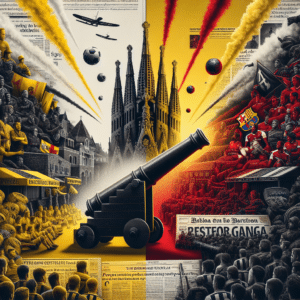On March 17th, people around the world will celebrate St. Patrick’s Day, a holiday associated with wearing green, parades, and shamrock hunting. However, the origins and significance of this day go beyond these festivities. St. Patrick’s Day is rooted in history and celebrated as a tribute to St. Patrick, the patron saint of Ireland. St. Patrick was renowned for his heroic actions, including being the first person in history to publicly condemn slavery. The holiday is not only a celebration of Irish culture but also an opportunity to honor the contributions of St. Patrick and appreciate the rich history of Ireland.
The Historical Significance of St. Patrick’s Day
St. Patrick’s Day is more than just a one-day celebration on March 17th. In fact, it has become an almost three-week-long celebration, with various events and traditions taking place both in Ireland and around the world. The holiday holds an important place in the hearts of people, particularly those with Irish heritage. It is a time to reflect on St. Patrick’s legacy and the enduring influence of Celtic traditions.
Why Wear Green and Pinching Tradition
One of the most recognizable aspects of St. Patrick’s Day is the tradition of wearing green. Green symbolizes Ireland and its lush landscapes, often referred to as the emerald isle. Wearing green on this day is a way to show solidarity with Irish culture and heritage. Additionally, the tradition of pinching those who do not wear green is believed to be rooted in Irish folklore. It was believed that wearing green made a person invisible to mischievous leprechauns who would pinch those they could see. However, it is important to note that pinching someone without consent could be considered a form of harassment and may lead to legal consequences.
Surprising Facts and Celebrations
- Chicago’s annual St. Patrick’s Day parade is famous for dyeing the Chicago River green, attracting thousands of spectators.
- St. Patrick’s Day is not only celebrated in Ireland but also by Irish communities around the world, showcasing the global reach of Irish culture.
- St. Patrick’s Day festivities often include traditional Irish music, dancing, and the consumption of Irish cuisine and beverages.
- Despite its association with alcohol, St. Patrick’s Day is also celebrated with family-friendly events, such as parades and carnivals.
- St. Patrick’s Day has religious connotations and is celebrated as a religious holiday by many Christians, particularly those of Irish descent.
“St. Patrick’s Day represents an opportunity to celebrate Irish culture, remember the heroic actions of St. Patrick, and unite people from various backgrounds in a festive spirit of camaraderie and joy,” explains Dr. Margaret Sullivan, a historian specializing in Irish history.
Overall, St. Patrick’s Day is a time to honor the history, culture, and contributions of Ireland and its people. It serves as a reminder of the resilience and heroism of St. Patrick and provides a chance for individuals around the world to come together and celebrate their shared Irish heritage.




Leave a Reply